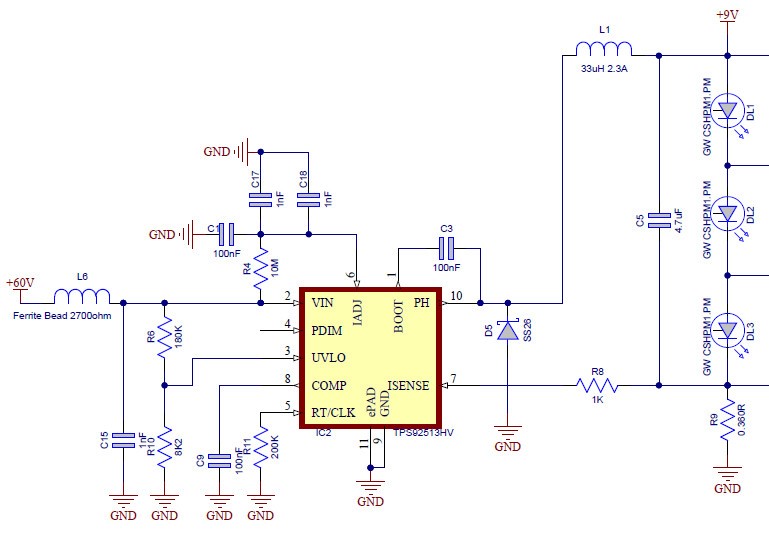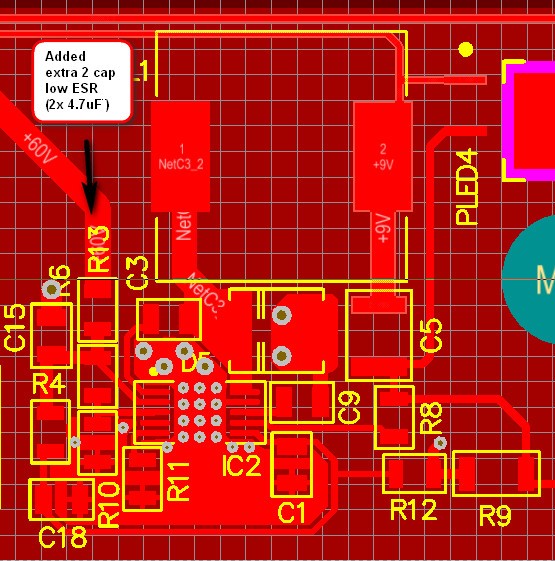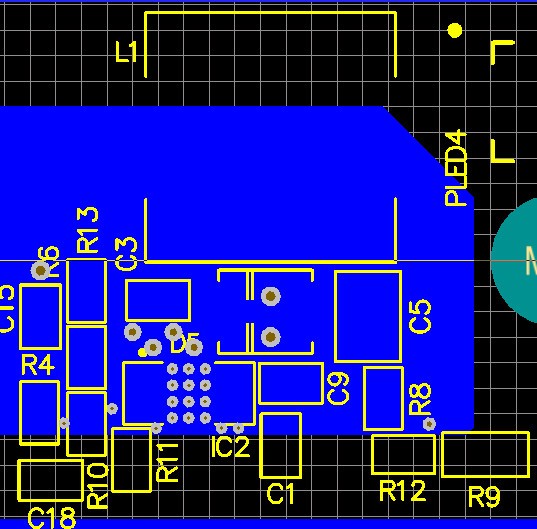Hi,
We have a LED drivers design where 3 LEDs are powered at 450mA and we are breaking all the prototypes we are testing.
This is the original design where some values have been changed:
The C15 value is now of 10uF and R9 is 0.68ohm (to adjust to 450mA).
We have also modified R10 to 18K to start lighting at lower input but with the same result.
We have an external power supply (0-60V) and we increase slowly the VIN from 0.
At about 13V the LEDs start lighting and become stable up to 30V. At about 36V input the TPS breaks.
It is HV so it should support a maximun of 65V but we have tried in about 5 prototypes and all of the does not support more than 36V input.
The result is always the same, the MOS transistor broken (ussually shorcut VIN and PH).
We have replaced the TPS with another new, and again they brake.
The most amazing thing is that in some previous prototypes with the same circuit they are running perfect at 55V input.
They are in burning for 24h and they are running (one died this morning without any action).
Sincerely, the TPS seems to be very weak or we are not taking in count something that breaks the transistor.
Coudl you help us?
Many thanks




